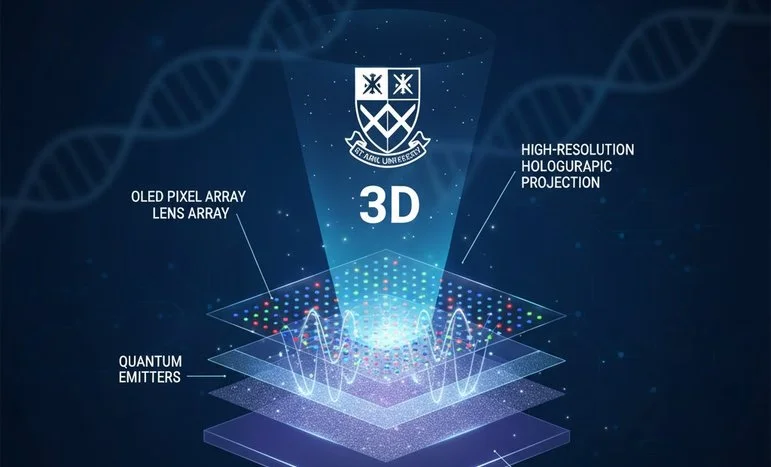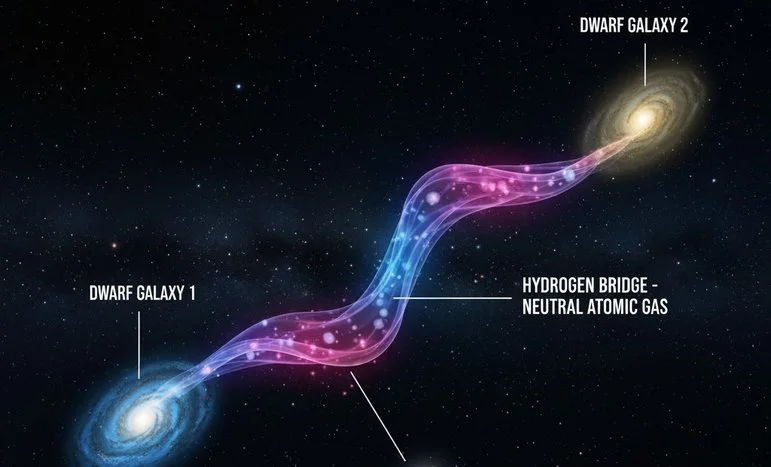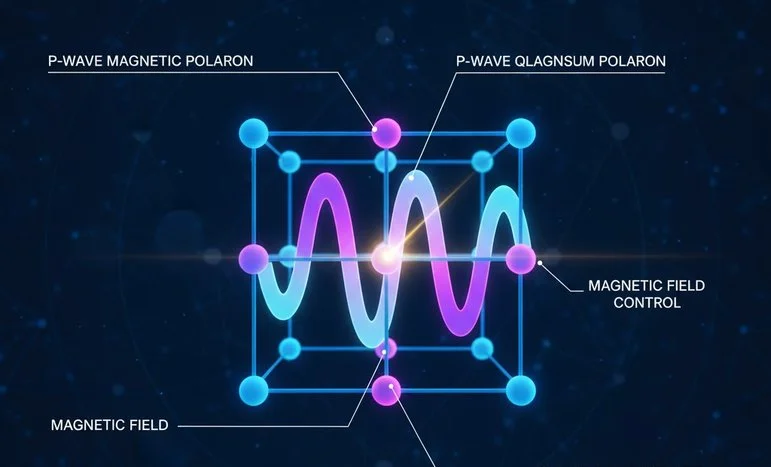
University of St Andrews Creates Breakthrough Pixel for Holographic Displays
Breakthrough Pixel Combines OLEDs and Metasurfaces for Affordable Holographic Displays
The University of St Andrews has unveiled a pioneering innovation in display technology: a pixel that merges OLEDs with metasurfaces. This development could revolutionize smartphone, VR, and AR displays, making holographic imaging compact, cost-effective, and accessible for everyday consumer devices.
The Convergence of OLEDs and Metasurfaces
Traditional displays manipulate light in predictable ways using standard pixels. However, metasurfaces—nanoscale patterned structures—allow for precise control over the phase, amplitude, and direction of light. By combining this with the vibrant and energy-efficient properties of OLEDs, the St Andrews team has created hybrid pixels capable of forming holographic images at the source.
This approach enables real-time 3D visualization without relying on complex projection setups or external lenses. For the first time, holographic display technology can be integrated directly into compact consumer devices, bridging a decades-long gap between laboratory experiments and real-world applications.
How the Technology Works
The innovation hinges on a metasurface layer integrated atop each OLED pixel. OLEDs emit light across RGB wavelengths with high color fidelity, while the metasurface reshapes that light at the subwavelength scale. This phase control allows each pixel to contribute directly to a volumetric or holographic image.
Unlike conventional holography, which requires lasers and interference patterns, this OLED–metasurface pixel generates holographic effects with standard electronic driving signals. Each pixel functions as a miniature 3D emitter, enabling full-screen holographic images on small displays like smartphones or AR/VR headsets.
Potential Consumer Applications
The implications of this breakthrough are vast:
- Smartphones: Devices could display 3D holographic content without additional hardware. Users could view interactive maps, videos, or messages in true 3D.
- AR and VR: Headsets could become lighter, with higher-resolution depth perception and immersive experiences, enhancing gaming, training, and education.
- Medical Imaging: Doctors and researchers could visualize organs, tissues, and cellular structures in real time, improving diagnostics and surgical planning.
- Telepresence: Holographic video calls could make remote communication more lifelike, fostering human connection in business, education, and family contexts.
- Industrial Design: Engineers and architects could interact with 3D models directly, optimizing prototypes and reducing development costs.
By reducing the cost and complexity of holographic displays, this technology could democratize immersive visualization, moving it from specialized labs to everyday devices.
Advantages Over Conventional Holographic Systems
Conventional holography faces limitations such as bulkiness, laser requirements, and computational overhead. The OLED–metasurface integration addresses these issues by offering:
- Compactness: Suitable for mobile and wearable devices.
- Energy Efficiency: Leverages OLED low-power characteristics.
- Scalability: Integrates with existing manufacturing processes for displays.
- High-Resolution 3D Imaging: Delivers volumetric effects without external optics.
This combination could accelerate adoption of holographic technology across consumer electronics, healthcare, and industrial applications.
Technical Challenges and Path Forward
While promising, there are hurdles to commercial deployment:
- Nanofabrication Precision: Maintaining uniformity across millions of pixels requires cutting-edge lithography and quality control.
- Color Accuracy: Ensuring consistent hue, saturation, and brightness across the display is essential for realistic holographic images.
- Manufacturing Yield: Scaling production while preserving performance and minimizing defects will be critical.
Despite these challenges, the foundational concept of merging OLEDs with metasurfaces is sound, and early prototypes demonstrate clear feasibility for real-world applications.
Broader Implications for Science and Industry
Beyond consumer electronics, this innovation has implications for:
- Photonics and Optical Computing: Nanoscale light control could enhance computational speed and efficiency.
- Quantum Imaging: Precise manipulation of photons may benefit next-generation quantum sensors and communication.
- Global Technology Leadership: Europe could gain a strategic advantage in advanced display and photonics research, complementing U.S. and East Asian efforts.
By demonstrating scalable, cost-effective holographic pixels, the University of St Andrews is contributing to the next frontier of visual technology, merging physics, materials science, and engineering.
Expert Perspective
“By combining light emission and nanoscale control, we are redefining what is possible in display technology,” noted a lead researcher. “Holography is no longer confined to laboratories—it can fit in the palm of your hand.”
This statement highlights the transformative potential of OLED–metasurface pixels, bringing immersive 3D displays into mainstream devices.
Future Outlook
As AR/VR adoption grows and spatial computing becomes mainstream, compact holographic displays could redefine how users interact with technology. Consumer electronics companies, including Apple, Meta, and Samsung, are actively exploring holographic interfaces, and this technology could provide the missing link to mass-market adoption.
With further development, the following could become reality:
- Interactive 3D content in social media and gaming.
- Portable holographic workstations for design, engineering, and education.
- Medical holographic imaging integrated into telemedicine platforms.
The St Andrews breakthrough represents a practical pathway for the convergence of holography, photonics, and consumer electronics.
Key Takeaway
The fusion of OLEDs and metasurfaces by the University of St Andrews establishes a new paradigm for compact, affordable holographic displays. This innovation promises to make 3D visualization accessible across multiple industries, from entertainment and education to healthcare and design, heralding a future where holographic interaction is a daily reality.
We appreciate that not everyone can afford to pay for Views right now. That’s why we choose to keep our journalism open for everyone. If this is you, please continue to read for free.
But if you can, can we count on your support at this perilous time? Here are three good reasons to make the choice to fund us today.
1. Our quality, investigative journalism is a scrutinising force.
2. We are independent and have no billionaire owner controlling what we do, so your money directly powers our reporting.
3. It doesn’t cost much, and takes less time than it took to read this message.
Choose to support open, independent journalism on a monthly basis. Thank you.



















